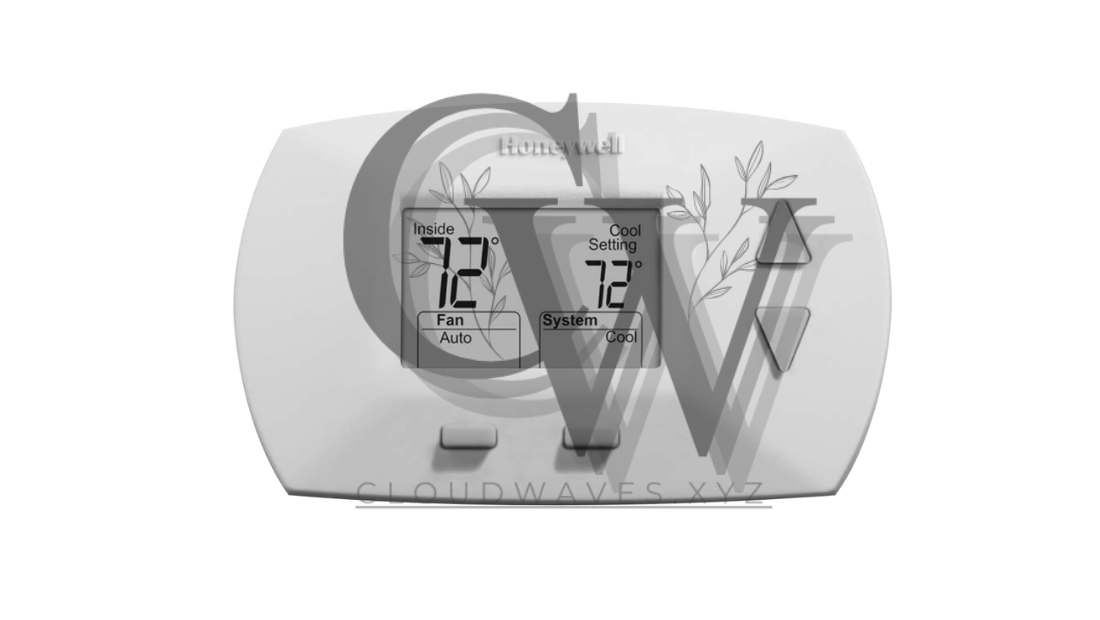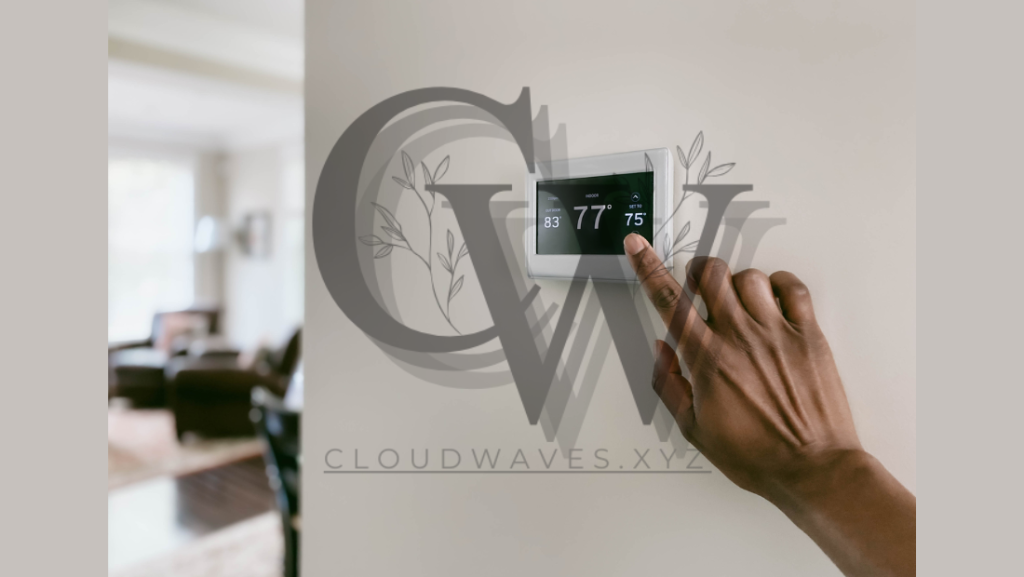BLOG
From Installation to Smart Control: A Comprehensive Guide to Setting Up Your Honeywell Thermostat
A smart thermostat is one of the most impactful upgrades you can make to your home’s heating and cooling system. Not only do these devices offer greater convenience, but they also help you save on energy bills by optimizing your HVAC system’s performance. One of the most trusted names in smart thermostats is Honeywell, a brand that has been at the forefront of home climate control for years.
In this comprehensive guide, we’ll walk you through the entire process of setting up your Honeywell thermostat, from installation to smart control. Whether you’re replacing an old thermostat or upgrading to a more advanced model, we’ve got you covered with everything you need to know.
Why Choose a Honeywell Thermostat?
Honeywell thermostats are known for their reliability, ease of use, and advanced features. They come in various models, each offering a range of functionalities:
- Honeywell Home T9: A smart thermostat with room sensors for temperature control in multiple areas of your home.
- Honeywell Home T10 Pro: A more advanced model with professional-grade features, including remote sensors, zoning capabilities, and integration with HVAC systems.
- Honeywell Lyric T5: A Wi-Fi-enabled smart thermostat that provides remote control and geofencing capabilities.
Honeywell thermostats offer benefits like:
- Remote Access: Control your thermostat from anywhere via the Honeywell Home app.
- Energy Efficiency: The ability to schedule temperature changes, enabling more efficient use of energy.
- Voice Control: Integration with Google Assistant, Amazon Alexa, and Apple HomeKit for hands-free control.
- Smart Learning: Some models learn your preferences over time, automatically adjusting the temperature based on your habits.
Step 1: Preparing for Installation
Before diving into the actual installation of your Honeywell thermostat, it’s important to prepare your home and ensure you have all the tools you need.
Tools and Materials You’ll Need:
- Screwdriver (typically Phillips-head)
- Level (optional, but helpful for a clean installation)
- Drill (if additional holes are needed for mounting)
- Wire labels (usually provided with the thermostat)
- Smartphone or tablet to download the Honeywell Home app
- Wi-Fi network (make sure your network is 2.4 GHz, as many Honeywell thermostats do not support 5 GHz)
Turn Off Your HVAC System
Before you start installing your thermostat, turn off the power to your HVAC system to avoid any electrical accidents. This can usually be done at the circuit breaker panel.
Step 2: Removing Your Old Thermostat
If you’re replacing an existing thermostat, carefully remove it by following these steps:
- Remove the Cover: Take the cover off your old thermostat.
- Disconnect Wires: Take note of how the wires are connected to your old thermostat. You can use a smartphone to take a picture or write down the wire labels (e.g., R, C, Y, W).
- Remove the Mounting Plate: Unscrew the thermostat from the wall and remove the mounting plate.
- Inspect Wires: Ensure that the wires are in good condition. If the wires are frayed or damaged, you may need to trim them before connecting them to your new thermostat.

Step 3: Installing Your Honeywell Thermostat
Now that your old thermostat is removed, you can begin the installation of your new Honeywell thermostat.
Mounting the Thermostat Base
- Attach the Mounting Plate: Line up the base of the Honeywell thermostat with the wall. Use the included screws to attach the mounting plate to the wall. Make sure the plate is level to ensure the thermostat functions correctly.
- Connect the Wires: Carefully connect the wires to the corresponding terminals on your new thermostat. You’ll usually find labels such as:
- R (Red): This wire supplies power to the thermostat from the HVAC system.
- C (Common): This wire provides continuous power to the thermostat for Wi-Fi connectivity.
- Y (Yellow): This wire controls the cooling system (air conditioning).
- W (White): This wire controls the heating system (furnace).
- G (Green): This wire controls the fan.
If your system has more wires (e.g., O, B, E, etc.), check the thermostat’s manual for additional wire connection instructions. It’s important to securely attach the wires to their respective terminals to prevent any issues later.
- Secure the Thermostat to the Base: Once the wires are connected, carefully snap the thermostat into place on the mounting base.
Step 4: Powering Up and Initial Setup
After installing the thermostat, turn the power back on at the circuit breaker. Your Honeywell thermostat should power up, and you’ll be prompted to follow a series of steps to complete the initial setup.
Setting Up the Thermostat
- Select Language: Choose your preferred language for the thermostat’s display.
- Connect to Wi-Fi: Your thermostat will prompt you to connect it to your Wi-Fi network. Choose your network and enter the password.
- Set Date and Time: If prompted, enter the date and time.
- Configure Temperature Settings: Set your heating and cooling preferences, such as temperature limits, heating/cooling cycle settings, and the type of HVAC system (e.g., heat pump, furnace, etc.).
- Create a Schedule: You can manually set a schedule for your thermostat to adjust the temperature based on your daily routine (e.g., cooler during the day when you’re out and warmer when you’re home). This is ideal for energy savings.
Step 5: Downloading and Configuring the Honeywell Home App
To get the full functionality of your Honeywell thermostat, download the Honeywell Home app from the App Store or Google Play store. This app allows you to control your thermostat remotely, monitor energy usage, and create advanced scheduling.
- Create an Account: Open the app and create a Honeywell Home account if you don’t have one. This account will let you link all your Honeywell devices together.
- Add Your Thermostat: Once logged in, tap the “+” icon to add your thermostat. Follow the on-screen instructions to connect the thermostat to the app.
- Name Your Thermostat: Give your thermostat a unique name (e.g., “Living Room” or “Downstairs”).
- Create Automation: Set up automation such as:
- Home/Away Mode: Adjust the temperature when you leave or arrive home.
- Geofencing: The thermostat automatically adjusts the temperature based on your location.
- Energy Saving Features: Set the thermostat to enter energy-saving mode during certain hours.
Step 6: Integrating with Voice Assistants
Honeywell thermostats are compatible with popular voice assistants like Amazon Alexa, Google Assistant, and Apple HomeKit, allowing you to control the temperature hands-free.
Setting Up Voice Control
- Link to Alexa: Open the Amazon Alexa app and go to the Smart Home section. Select “Add Device” and search for Honeywell. Follow the prompts to link your account.
- Link to Google Assistant: Open the Google Home app, tap “Add,” and select “Set up device.” Find Honeywell from the list and link your thermostat.
- Link to Apple HomeKit: Open the Home app on your iPhone and scan the HomeKit setup code on your Honeywell thermostat.
Once linked, you can control your thermostat with voice commands like:
- “Alexa, set the thermostat to 72 degrees.”
- “Hey Google, turn the heat on.”
- “Hey Siri, adjust the living room thermostat.”
Step 7: Enjoying Smart Features
Now that your Honeywell thermostat is fully set up, you can enjoy all of its advanced features, including:
- Smart Learning: Some models, like the Honeywell T9, learn your preferred temperature settings over time and automatically adjust the temperature based on your habits.
- Geofencing: The thermostat knows when you’re home or away and adjusts the temperature accordingly, so you don’t waste energy heating or cooling an empty house.
- Energy Reports: The Honeywell Home app provides detailed reports on your energy consumption, helping you identify opportunities for savings.
Troubleshooting and Tips
While Honeywell thermostats are designed to be easy to use, there may be a few issues that come up during installation or setup. Here are some common troubleshooting tips:
- Wi-Fi Connection Issues: Ensure your Wi-Fi network is 2.4 GHz and that the thermostat is within range of the router.
- Thermostat Not Responding: Try resetting the thermostat by removing it from the wall and powering it off for 30 seconds before reconnecting it.
- HVAC System Compatibility: Double-check that your thermostat is compatible with your HVAC system type (e.g., heat pump, furnace, etc.).
Conclusion
Setting up your Honeywell thermostat is a simple and rewarding process that can help you optimize your home’s comfort and energy usage. By following these steps from installation to smart control, you’ll not only enjoy a more efficient HVAC system but also have the convenience of managing your home’s temperature from anywhere.
Whether you choose the Honeywell T9, T5, or another model, the integration with the Honeywell Home app and voice control systems allows you to enjoy a truly connected home experience. With the energy-saving features and advanced scheduling capabilities, your new Honeywell thermostat is sure to enhance your home’s efficiency and comfort for years to come.

